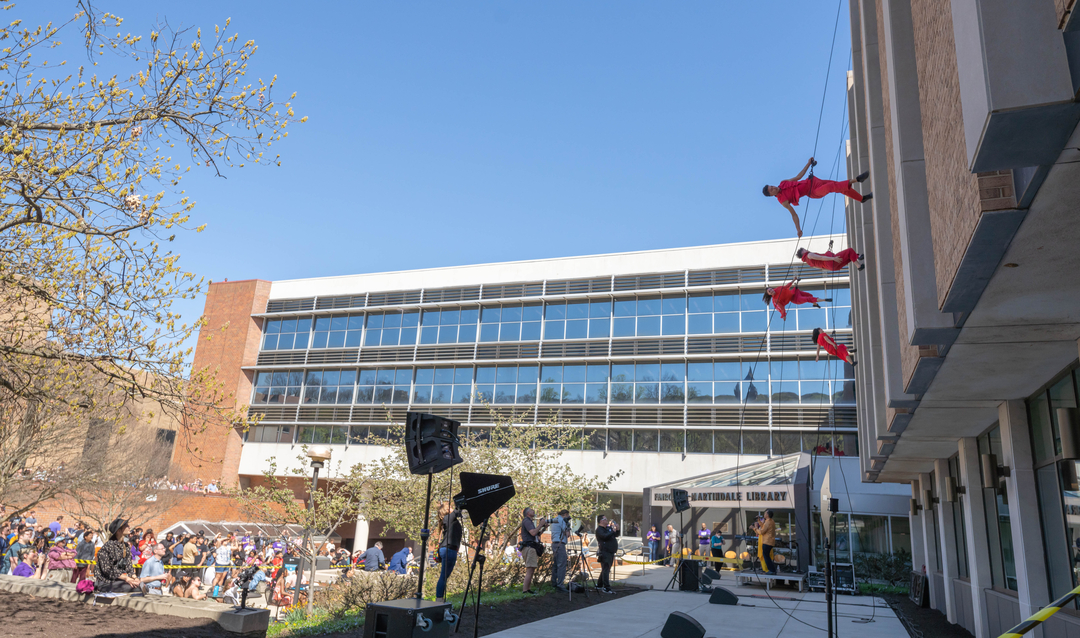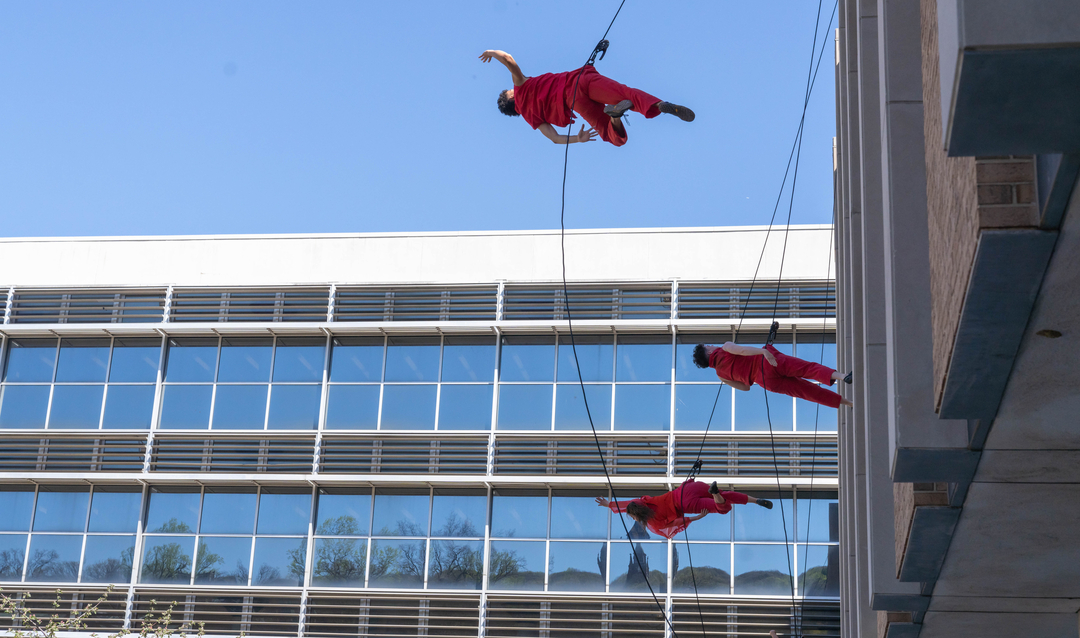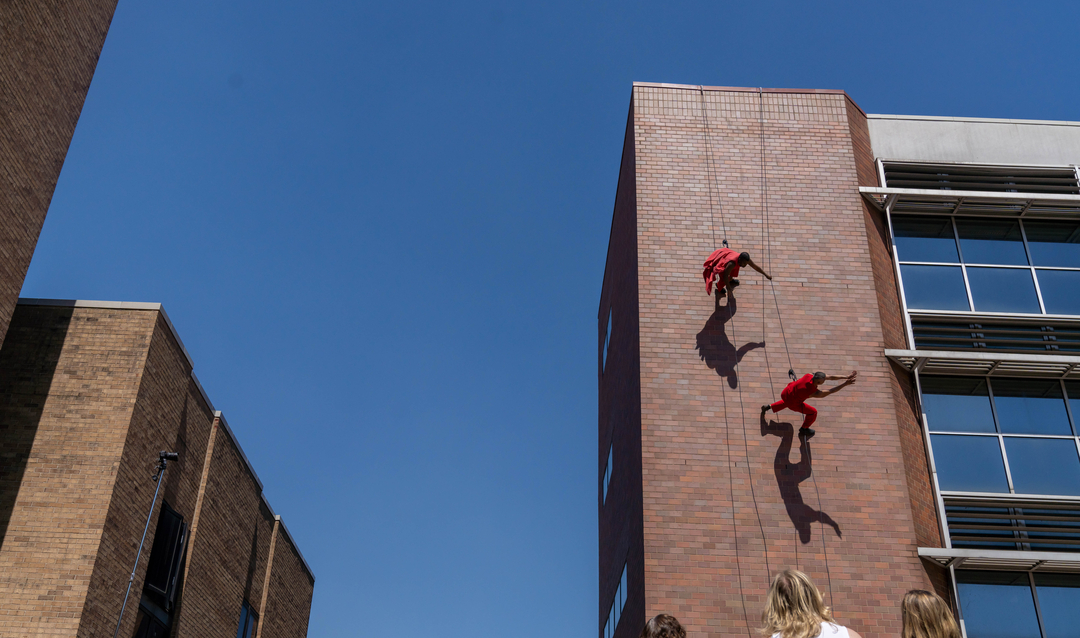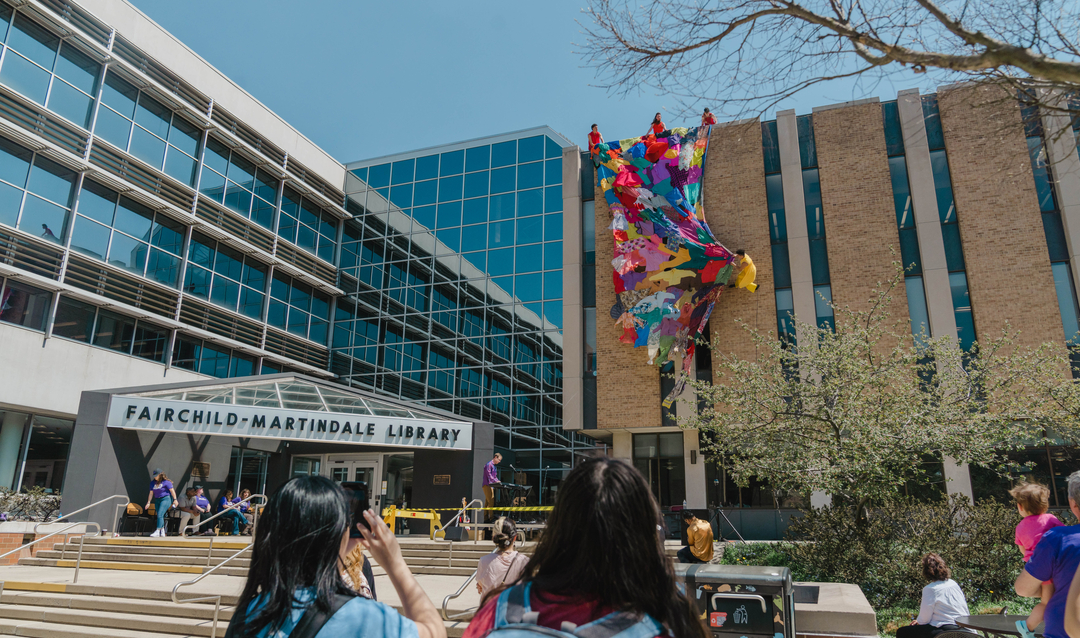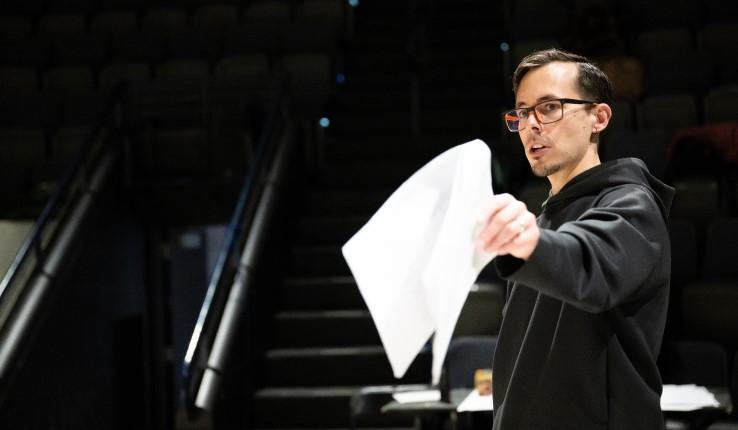In addition to several performances on Thursday—and another one Saturday night (April 15) at Zoellner Arts Center preceding its anniversary gala with the Philadelphia Orchestra—Bandaloop is presenting two residencies. On Monday (April 17), Bandaloop will teach the Lehigh University Dance Team about its technique and give members the opportunity to practice wall dancing. On Tuesday (April 18), it will do the same with students from the Muhlenberg College acrobatics class.
A Vertical Dance Company
Bandaloop calls itself a “vertical dance company” that “celebrates the human spirit, nature and communities through dance that uses climbing technology to expand and challenge what is possible.”
Wilson said he has long admired the “world class” company, which has presented its gravity-defying artistry and messages of social and environmental responsibility since 1991.
The company arrived at Lehigh on Monday, with eight performers, three riggers and two technical staff. The week was spent “rigging and rehearsing,” said Bandaloop Artistic Director Melecia Estrella. Dancers drew attention all week as they practiced rappelling on the library walls. Estrella noted that it takes a while to “learn the building.”
Learn it, they did.
Featured were four dances in a truncated version of “LOOM: Field.” “LOOM” is a three-part series designed to “deepen and challenge our perspective on the art and industry of textiles.” “Field” is the middle piece; the first, “Flood,” premiered in February 2020, and the third, “Flock,” is a work in progress.
Introducing the performance, Estrella explained that “one thing all of you have in common is you are all wearing clothes. The cotton on your skin came from a field. The silk came from a cocoon. The polyester came from oil extraction. This show is dedicated to the soil and the cocoons and the great workers who make our clothes possible. And to our grandmothers who made your clothes and created a world for you to live in.”
From a stage near the library entrance, singer Chibueze Crouch, guitarist/pianist/composer Ben Juodvalkis and Estrella, presented powerful original music and spoken words that inspired the dancers’ movements. The music varied from urgent, thumping rhythms, to soulful jazz to ethereal. One dance was a solo, with Crouch singing while suspended and wrapping herself in a giant quilt dropped from the roof. Another was a duet, and the performance opened and closed with group dances. The choreography was intricate and compelling. In essence, according to Estrella, “LOOM: Field” was designed to turn a building’s façade into a giant loom, “where stories and dances interlace.”
Bandaloop describes “LOOM” this way: LOOM blends ancestral weaving mythologies, traditional techniques of fabric creation, expressions of the ecological and social impacts of a globalized textile industry and the influence of technological fibers that connect and divide lives into a dynamic performance. As vertical dance is a form that relies on state-of-the science woven nylon climbing ropes, LOOM locates Bandaloop’s core technical framework in a textile lineage.
“As one of the largest polluting industries in the world, fraught with devastating globalized labor and farming practices, the impact of clothing and fashion is often overlooked in our modern consumer lifestyles. The fallout of our textile consumption will be dealt with for generations to come. ‘LOOM juxtaposes this large-scale ecological crisis with the timeless cross-cultural power of fabric to hold, comfort, adorn and sanctify the human experience. Fabric stories are drawn from the swaddling blanket, the altar cloth, the death shroud and the fishing net. LOOM also weaves in the community building and therapeutic aspects of handmaking techniques; the focused rhythms of stitching, knitting, spinning and weaving of fiber onto cloth.”
The theme of ‘LOOM’ created a huge opportunity for an educational experience because at the turn of the 20th century, the Lehigh Valley was a huge textile hub—the second largest producer of silk in the world.


